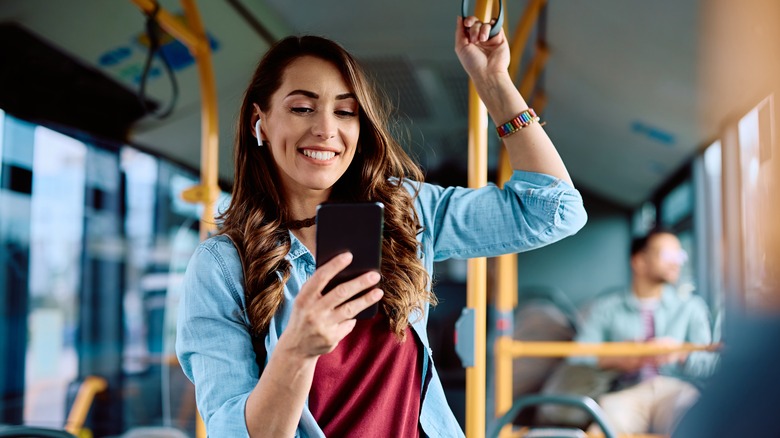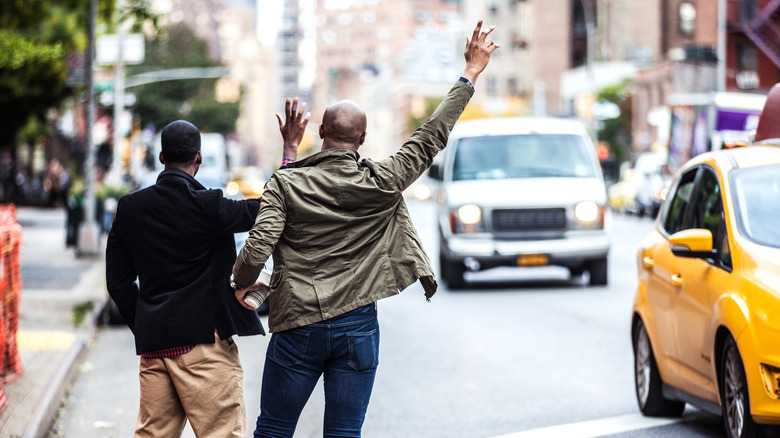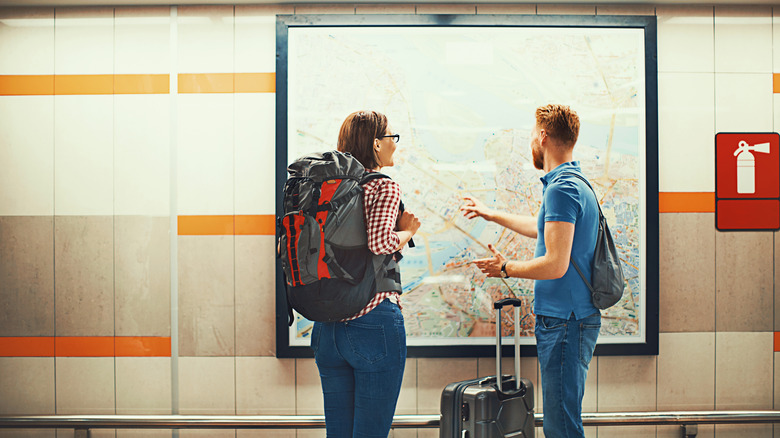Stay On Budget During Your Next Trip With This Simple Transportation Tip
Visiting a new place always comes with its own rush of excitement and a sense of wonder. There are new streets to wander, local cafes to try, new people to meet, and hidden gems just waiting to be discovered — but with all the hustle and bustle, one question remains: How do you get to all of these places and people calling your name without breaking the bank?
Finding the balance between wanting to explore freely and figuring out how to stay on a budget is an all-too-common traveler dilemma. While taxis and Uber might be the go-to options for convenience, they can also lead to some hefty and unexpected costs if you're not watching your spending closely.
However, most destinations have a winning solution: public transportation. Although less private — and requiring a tad more planning — local transportation is a fixed-rate, often affordable, and even eco-friendly way to move around and experience a place like the locals do.
The price behind a quick ride
Sure, jumping into a taxi or booking an Uber often seems like the easiest choice — especially when you're dealing with an unfamiliar destination. Whether you're lugging around a too-heavy suitcase or the weather isn't ideal, immediate transportation has an undeniable allure. But before you tap open your apps or opt for hailing a cab, there are a few factors to consider.
For one, there's a major catch in terms of inflated fares and vulnerability. An unfamiliar accent is a dead giveaway for taxi drivers looking to make a little something extra. So, once you've been recognized as a foreigner, some might opt for longer routes to rack up the meter or go without using the meter and just make up a final rate at their whim. And, since you have no clue where you're going or what's happening, this won't seem off until you've arrived at your destination 10 minutes later and paid almost triple for your ride. Lastly, there's also the issue of personal safety. From Thailand to Mexico, there have been reports of taxi drivers using violence or cooperating with local groups to rob tourists.
Then, there are ride-share apps. Although these do provide an added level of transparency, they also come with their own set of challenges. Surge pricing, for example, which is often triggered during peak times or in areas bustling with demand, can easily skyrocket costs and double the cost of a single journey.
Embracing local transportation with ease
Enter local transportation. Although hopping on public transportation might seem daunting at first — especially in a foreign language — there are a few things you can do to help yourself plan ahead and feel comfortable enough navigating the routes and schedules on your own.
For starters, doing your homework pays off. Before your trip, spend a little time familiarizing yourself with the city's public transportation system. Many destinations with the world's best public transportation systems have dedicated websites that provide route maps, schedules, and even fare breakdowns. Plus, apps like Google Maps and Moovit are also helpful for tracking stops on the go and pinning important locations to help you get back to your hotel.
Additionally, although language barriers might seem like the biggest challenge, not speaking the local lingo doesn't have to be an issue. Learning a handful of essential words — like "station", "ticket", and even "price" — can help things run a little smoother. And, when you're on that bus or train, keeping an eye out for notable landmarks near your stop can be an easy way to know when it's time to hop off. Lastly, the most important tip when it comes to dealing with local transportation is to stay alert. Big city public transportation can be a hub of activity — which means it's easy to get overwhelmed or become an easy target for pickpockets. If a mistake happens, like missing a stop, don't stress — and remember it's all part of the adventure.


